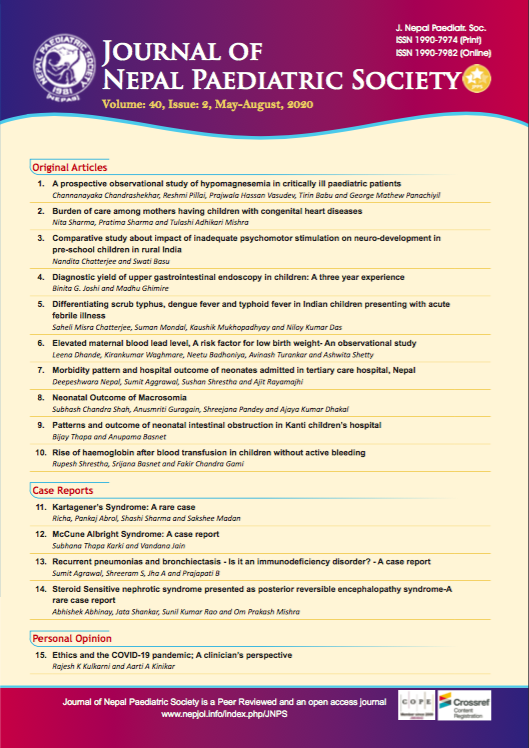Elevated Maternal Blood Lead Level - A Risk Factor for LBW - An Observational Study
DOI:
https://doi.org/10.3126/jnps.v40i2.29153Keywords:
Blood Lead, Cosmetics, Newborn, Preterm, ToxicAbstract
Introduction: Lead exposure is common in women. Lead stored in bones is released during pregnancy and can potentially affect foetal growth. We conducted this study to estimate the effect of maternal blood Lead (BPb) status on Low Birth Weight (LBW) in newborns.
Methods: 168 mothers were selected from Special Neonatal Care Unit (SNCU) and Postnatal care (PNC) wards of a tertiary care hospital from Central India and their BPb levels analysed by Graphite Furnace Atomic Absorption Spectrophotometer.
Results: 22 (13.10%) mothers having BPb level ≥ 5μg/dL gave 23 births (one twins); of which 65.22% mothers delivered babies with birth weight < 2500gm (LBW) (p = 0.0007). The mean birth weight of newborns of mothers with high BPb levels was significantly lower by 269 gm (p = 0.0265). Mothers with BPb ≥ 5μg/dL delivered 39% premature babies as compared to 10 % mothers with BPb < 5 μg/dL (p < 0.003). Significantly more mothers exposed to kajal, nail polish, lipstick and paints had BPb levels ≥ 5μg/dL.
Conclusion: Significant association is detected between maternal BPb and both LBW and prematurity in the given population.
Downloads
Downloads
Published
How to Cite
Issue
Section
License
Authors who publish with this journal agree to the following terms:
Authors retain copyright and grant the journal right of first publication with the work simultaneously licensed under a Creative Commons Attribution License that allows others to share the work with an acknowledgement of the work's authorship and initial publication in this journal.
Authors are able to enter into separate, additional contractual arrangements for the non-exclusive distribution of the journal's published version of the work (e.g., post it to an institutional repository or publish it in a book), with an acknowledgement of its initial publication in this journal.
Authors are permitted and encouraged to post their work online (e.g., in institutional repositories or on their website) prior to and during the submission process, as it can lead to productive exchanges, as well as earlier and greater citation of published work (See The Effect of Open Access).



